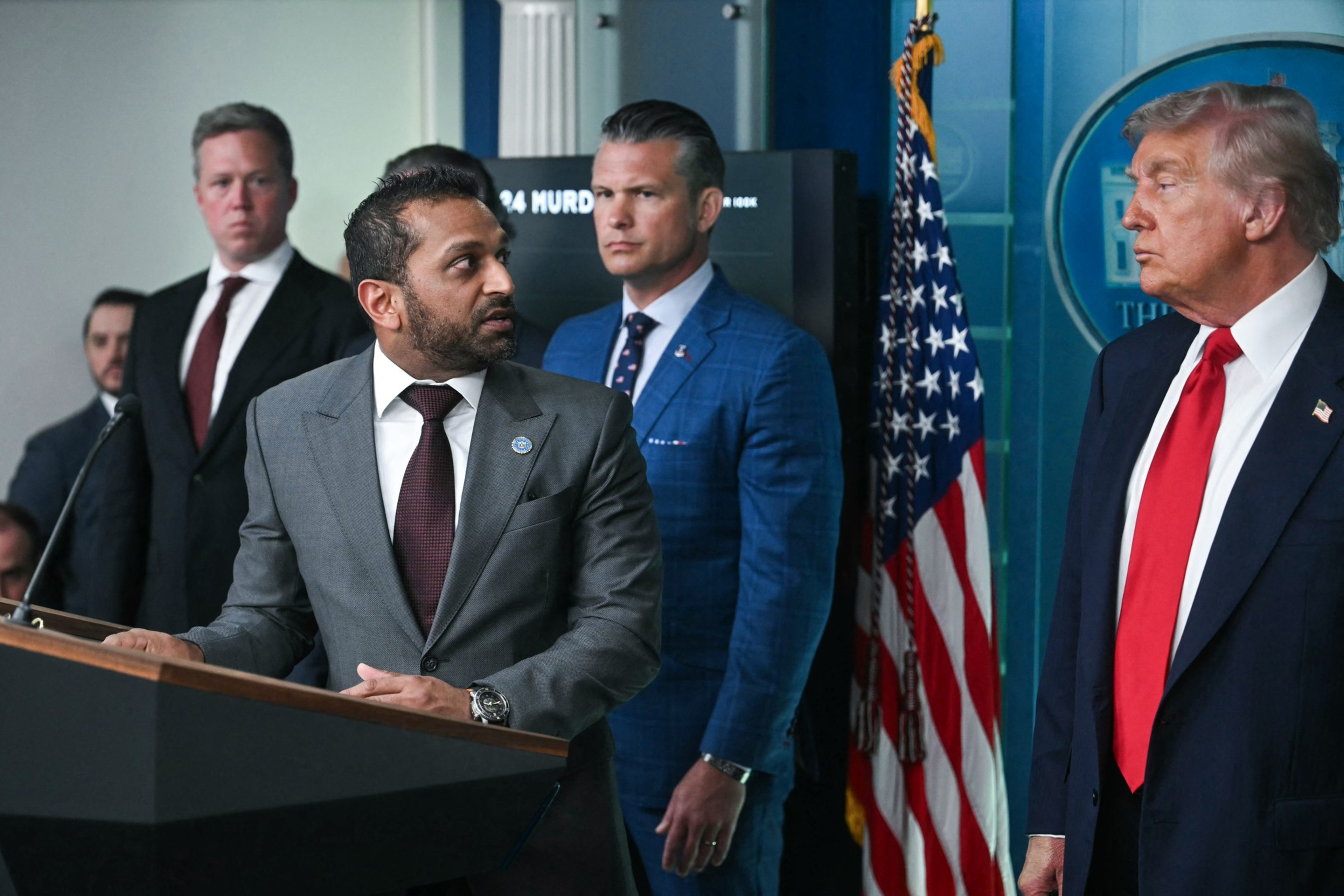Happy hour got a little militarized last week.
My husband was out for drinks with a friend Aug. 13 in the Shaw neighborhood of our home city of Washington, D.C., when they heard a commotion outside. A few blocks away, on 14th Street, federal and local police officers had blocked off the road with their vehicles. Tugging neck gaiters over their faces, they pulled over car after car. At least two people were detained.
This is now part of life in the capital. The impact is psychological. My Uber driver visibly tenses and slows to a crawl when a motorcade of unmarked cop cars drives by; I cross the street when I see men in bulletproof vests approaching; everyone at a party holds their breath as a helicopter roars overhead.
For me and for my friends living in the city, the deployment of National Guard troops, which began Aug. 11, is not about stopping an imaginary surge in crime. It’s about the constant visibility of President Donald Trump’s power. “When you walk down the street, you’re going to see police, or you’re going to see FBI agents,” Trump told reporters last week (opens in new tab) of the deployments in D.C. “We’re going to have a lot of agents on the street. You’re going to have a lot of, essentially, military. And we will bring in the military if it’s needed.”



Though the president is not always a man of his word, here he is telling the truth. In place of a master strategy to reduce crime and keep residents safe, he has opted for sporadic shows of force: an Immigration and Customs Enforcement checkpoint on one of the city’s busiest streets, a day of wiping away homeless encampments, an afternoon spent rounding up minority delivery drivers.
Life in D.C. has always meant living inside a security apparatus — the streets full of motorcades and armored Escalades, the restaurants flanked by stern-looking guards in Oakleys and earpieces — but this variation of a police state feels different. Group chats, once delivery devices for memes and gossip, are now filled with ICE sightings. “Feds rn in Union Market arresting a delivery guy,” a friend texts. “A bunch of masked-up pussies.”
Trump has utilized the National Guard before in moments of unrest: He deployed them in D.C. during the Black Lives Matter protests of 2020 and this year during the ICE protests in Los Angeles.



But there is no imminent crisis in D.C. Under his authority, Trump can utilize the National Guard for 30 days, after which he’ll need authorization from Congress. He has already said the administration will seek a longer deployment. Yet there is no stated end game for the military presence. “Call it the fog of law enforcement,” the law and policy journal Just Security (opens in new tab) wrote.
This means I’m not quite sure what I’m supposedly being protected from. The city indeed has “a chronic problem with violent crime,” according to Thomas Abt, founding director of the Center for the Study and Practice of Violence Reduction at the University of Maryland, who spoke to NPR this week (opens in new tab).
I’ve seen it firsthand: There’s been at least one lethal shooting on my block in Shaw since I moved here three years ago, and I know several people who have had their cars stolen. But crime in D.C. has declined (opens in new tab) since spiking in 2023, and experts say Trump’s spray-and-pray approach is unlikely to have a long-term impact.
What I do know is that I don’t feel any safer than I did last week, and instead have a new fear that my neighbors may be taken in an unmarked car, by a masked soldier, to an unspecified location.
I suspect that Trump’s overarching goal is to flex his power and create that persistent, nagging feeling that someone is watching over your shoulder. Cop cars clotted the street outside our apartment building Tuesday, crowds stopping to film and rubberneck. The woman manning our front desk shook her head as we walked in. “We’ll get through this,” she sighed.
Unless, of course, Trump makes good on his promise to extend this strategy to other cities.

“A key chapter in the fascist playbook has always been to convince the public that it is living in such a state of mortal danger and unbridled chaos that the only chance of survival is to cede individual rights to the determined will of the Dear Leader,” journalist Moustafa Bayoumi wrote last week in the Guardian (opens in new tab).
Out of curiosity, on Thursday I grabbed a drink at Butterworth’s, a French bistro that has become a MAGA favorite. I spotted a conservative influencer who advocates on his platform for a return to a white Christian America. He was eating with a handful of men in suits.
They seemed to be in high spirits.
